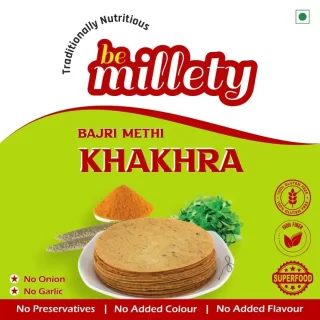
One of the world’s first cereals to be cultivated, millet has been farmed for thousands of years throughout Southeast Asia and all over Africa. You can produce bread, beer, cereal, and other foods out of millet. Several countries around the globe still eat millet on a regular basis.
In fact, millet is regaining popularity due to how adaptable and simple it is to grow. They all have comparable health advantages.
Niacin, which is present in large quantities in millet, helps your body regulate more than 400 enzymatic operations. Niacin is essential for wholesome skin and good organ function. In reality, it’s a crucial substance that is frequently added to processed meals as an enrichment.
Beta-carotene is especially abundant in darker varieties of millet. Its organic pigment supports the health of your eyes and functions as both an antioxidant and a precursor to vitamin A, assisting your body in fending off free radicals.
Health Benefits of Millets:
Blood Sugar Control
Since it includes more complex carbohydrates than simple carbohydrates, millet has a low glycemic index (GI). Because of this, millet takes longer to digest than regular wheat flour. Those with diabetes can more easily control their blood sugar levels because of low-GI foods’ ability to prevent blood sugar spikes after meals.
Fiber and non-starchy polysaccharides, two classes of indigestible carbohydrates that aid in blood sugar regulation, are abundant in millet.
Also, this cereal has a low glycemic index (GI), making it less likely to cause a blood sugar surge. Barnyard millet seems the best for controlling blood sugar levels.
Diabetes
As a result, millet is regarded as the best grain for diabetics.
For instance, a study including 105 individuals with type 2 diabetes found that switching from a breakfast made of rice to one made of millet decreased blood sugar levels after the meal.
Type 2 diabetes is indicated by insulin resistance. It happens when your body no longer reacts to the insulin hormone, which helps control blood sugar.
Moreover, a meal containing 20% finger millet resulted in decreased levels of fasting blood sugar, triglycerides, and cholesterol in a 6-week study in diabetic rats. Millets like Foxtail Millet, Kodo Millet, and Little Millet, Barnyard Millet, and Browntop Millet are good for diabetes patients.
Enhance Digestive Health
Both soluble and insoluble dietary fibers are abundant in millet. The insoluble fiber in millet acts as a “prebiotic,” encouraging the development of good bacteria in your gastrointestinal system. This kind of fiber is essential for keeping stools bulky, which keeps you regular and lowers your chance of developing colon cancer. Sorghum is considered the best for digestion.
Helps Lower Cholesterol
Soluble fiber found in millets enables your intestines to generate a viscous substance. This ultimately traps lipids and lowers cholesterol levels.
In a study with type 2 diabetic mice, a high-fat meal including millet protein concentrate was given to the animals. Comparatively to the control group, this resulted in a drop in triglyceride levels and a substantial rise in adiponectin and HDL (good) cholesterol levels.
Adiponectin is a hormone that has anti-inflammatory properties, promotes fatty acid oxidation, and improves heart function. Its levels are often lower in people with type 2 diabetes and obesity.
Promote Heart Health
Millet’s soluble fiber can aid in lowering blood levels of “bad” cholesterol, which is a risk factor for atherosclerosis. Soluble fiber changes into a gel in your stomach and absorbs cholesterol, allowing your body to safely eliminate it.
According to some research, millet can also increase your “good” cholesterol and reduce your triglycerides. Eating millet often may help keep your heart healthier because cholesterol is a significant risk factor for heart disease. The best millet for heart patients is foxtail millet as it contains protein that is considered good for heart health.
Gluten-Free
Millets are a grain that is free of gluten, making them an excellent option for those who have celiac disease or are on a gluten-free diet.
Grain species, including wheat, barley, and rye, naturally contain the protein known as gluten. Gluten must be avoided by those who have celiac disease or non-celiac gluten sensitivity since it can induce unpleasant gastrointestinal symptoms, including diarrhea and nutritional malabsorption.
To be sure it hasn’t been contaminated with any gluten-containing substances, check for a label on the millet that states it is gluten-free.
Millet Constituents
Millets may be classified as major millets and minor millets, two main types. There are different types of millet and a majority of them include high levels of fiber, micronutrients, iron, magnesium, zinc, calcium, manganese, and other minerals. And they can make up an entirely nutritious dinner when combined with pulses and veggies. A meal is considered full if it contains the ideal ratio of fiber, carbs, proteins, vitamins, and minerals. Omega-3 fats, sometimes referred to as “healthy fats,” are abundant in millet. As a result, they are a fantastic complement to a person’s diet.
By using millet as a replacement, you will not only be committing to a healthy and active lifestyle, but you will also be helping the nation’s suffering farmers. Yet this superfood promises to accomplish just that for Indian farmers and the entire populace. Because it has so many benefits, millet should be a regular part of the diet.
Here are some of the many arguments made for why millet ought to be on everyone’s plate, from preventing diabetes to fending off heart disease.
Study on Millets
A recent study that examined the data from studies involving approximately 1000 participants found that millet eating can lower total cholesterol, triacylglycerols (commonly known as triglycerides), and BMI. In order to address the rising incidence of obesity and being overweight in children, adolescents, and adults, initiatives to popularize and reintroduce millets back into diets, especially as staples, now desperately need scientific support.
According to the study, consuming millet lowered total cholesterol by 8%, lowering their cholesterol levels from high to normal. There was nearly a 10 percent decrease in low and very low-density lipoprotein cholesterol (commonly viewed as ‘bad cholesterol’) and triacylglycerol levels in the blood. The levels decreased from above-normal to normal as a result of these changes. In addition, consuming millet decreased blood pressure, with the diastolic blood pressure (the bottom number in the BP reading) decreasing by 5 percent.
According to the study, eating millet lowered participants’ total cholesterol by 8%, bringing it down to normal ranges. Low and very low-density lipoprotein cholesterol, or “bad cholesterol,” as well as triacylglycerol levels in the blood decreased by over 10%. These decreases brought the levels from above-normal to within the normal range. Consuming millet also resulted in a 5% reduction in diastolic blood pressure, which is the lowest figure in the reading of blood pressure.
The study also showed that millet consumption decreased BMI in overweight and obese individuals by 7% (from 28.5 (+/-2.4) to 26.7 (+/-1.8) kg/m2), suggesting a potential return to a normal BMI (less than 25 kg/m2). Eating 50 to 200 g of millet each day for a period of three weeks to four months is the basis for all of the outcomes.
Comparisons demonstrating that millets have unsaturated fatty acid levels that are 2–10 times greater than those of refined wheat, milled rice, and whole grain wheat have an impact on these findings.
The prevalence of diseases like cardiovascular disease and diabetes is on the rise, in large part due to a poor diet. The findings of this study, together with a recent study of ours that found that eating millets helped control type 2 diabetes and decreased the chance of acquiring it, underline the urgent need to carefully consider the best way to reintroduce millets into the diets of most Indians.
Globally, obesity and overweight are on the rise in both developed and developing nations, making it imperative to find solutions based on healthy diets. The need to invest more in the grain, encompassing its entire value chain from improved varieties for farmers through to agriculture business advancements, is further supported by this new information on the health advantages of millets.
The study indicated a number of high-priority topics for future research, including the need to examine all varieties of millets and comprehend any variations among them, as well as the various ways in which millets are cooked and processed and their effects on cardiovascular health.
Considering the promising outcomes thus far, it is also advised to do more thorough research on millet’s effects on weight control. To better understand how millet consumption affects hyperlipidemia and cardiovascular disease, it is advised to evaluate all crucial variables.
Which Millet is Good for the Heart?
Foxtail millet for heart patients is considered the best millet for heart. Everytime the question of “which millet is good for heart patients” arises, foxtail millet is considered to be the ideal millet for heart patients. While foxtail millet is made from an annual grass, the bran from the tough outer covering of the grain is removed during milling.
The study discovered a protein in foxtail millet bran called foxtail millet bran peroxidase that may prevent colon cancer cells from migrating. They conducted more studies to see if the protein may aid in the prevention of atherosclerosis, a kind of heart disease. This is why foxtail millet is the best millet for heart health. You can include millet based food products in your diet to improve heart health.






